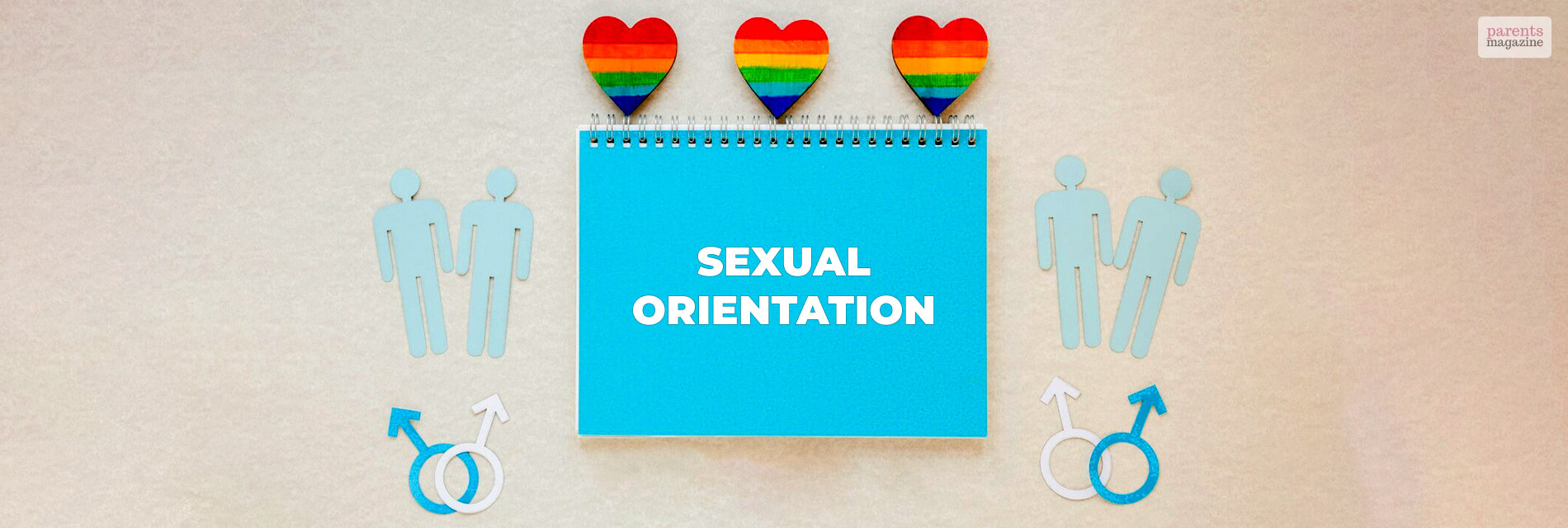
Here’s The Right Way To Talk To Your Kids About Sexual Orientation!
The world outside is changing rapidly. We have easier access to information nowadays. Kids are growing up so fast, and the rapid intake of information and self-awareness might seem overwhelming for kids. So, it is the parent’s responsibility to answer when the kids come to them asking for an answer.
Social media and the internet is a major catalysts to this rapid change; kids are observing so much around them and hardly have a clear explanation about their experiences. The problem is parents don’t have enough resources regarding how to address or answer their confusion. It is hard for them to have a clear, non-judgemental, and informative conversation.
Sexual Orientation And Gender Identity
It is common for children to come across terms related to LGBTQ and have no clear explanation about them. While many of us know the abbreviation of LGBT and the definitions of different terminologies under this term.
While the LGB part suggests the sexual orientation part, T stands for gender identity. Before you answer the questions of your child, you should have an idea about sexual orientation and gender identity yourself.
There are different terminologies and facts you need to know about sexual orientation and gender identities. This includes knowing about gay, lesbian, bisexual, pansexual, asexual, transgender, gender non-conforming, Cisgender, and more.
How To Talk To Kids About Sexual Orientation?

Here are some tips regarding how you talk to your kids about sexual orientation.
1. Start Early
You should give your child a sense of comfort so that they can feel free to ask you about their confusions down the road. You should start with an age-appropriate discussion regarding sexual orientation as early as possible. This will leave the door open for them as they grow older and are ready for more mature conversations.
2. Listen To Them Attentively
Children look for answers from different sources. It is normal for them to develop an idea about the questions that confuse them. So, when they are asking you questions, you should try listening to them. Listening attentively will help you have the idea they have regarding these facts. If there is any misconception, you can clear them if you leave a room open for discussion and questions. So, listening not only clears your confusion about children’s thoughts on sexual orientation, but it also opens room for further discussion in the future.
3. Honesty Is The Best Policy
Be open to a conversation and keep the information you provide them realistic and accurate. While you are at it, keep their developmental phase in mind. When answering their queries, be honest. If you don’t know the answer to some of their questions, say that you don’t know it. However, you should keep them encouraged to ask more questions.
4. Find The Teachable Moments
You can find these moments quite often. Just look for those moments, you would be able to find them in TV shows, song lyrics as well as in the community people. You will get ample opportunities to talk to your kids about this. These are the moments that will take the pressure off and it will make the bond deeper between you and your child. Ask them about their opinion or their take on the matter. Then take the conversation ahead, and move to the next step.
5. Keep The Discussion Going
Children will not be an expert on gender identity and sexual orientation from one conversation. You may need to pick up the conversation from time to time and help them experience it slowly, step by step. You can use real-life examples and experiences to re-engage and explain more about sexual orientation to your kids.
6. Age-Appropriate Information
Understanding sexual orientation and gender identity has to be different in different phases. You should teach children age-appropriate information. The level of information, complexity, and approach has to vary across different ages.
Here are different approaches for different ages –
Preschool Age (Age 3-5)
Kids aged between 3 to 5 years usually will not understand more complex and concrete answers to different sexual orientations and gender identities. At this phase, you should use very simple language and give simple and complete answers without leaving room for further details. If the child asks – why does their friend have two moms? You can reply – that families tend to be different. Some families have a mom and a dad. While some families have only two moms, while some of them have two dads.
School Age (Age 6 – 12)
At this phase in life, the children start to understand more complex aspects of sexual orientation and gender identities. They perfectly understand how they came to this world. Their questions regarding these topics also start to grow more complex. So, your answers need to be more concrete and have facts and information to back them up.
This is the age when children usually experience bullying at school. They might be bullied for their appearance. When someone cross-dresses or has an opposite appearance compared to their gender, they are generally subjected to bullying.
Your kids might come to you asking whether such action is right or wrong. You can explain by saying, “someone’s appearance does not define their gender. Someone may be a girl and might like to cut their hair short. However, if someone is teasing them for choice, then it is not right.” you can also ask them how they feel about such incidents.
Teenagers (Ages 13-18)
At the age of 13 to 18, children are more and more concerned and aware of their gender identities. They appear more straightforward about their sexual orientation and come out confidently. They might come to you asking different questions. They might share their experience with their classmates and friends, having more open conversations about these topics.
This is also the time to listen to and understand how teens think about LGBT people. However, if you are in the dark about certain things, it would be wise to keep your judgment limited about those topics. If your child says that their friend is lesbian or gay, you should ask them about their feelings and opinions before you express yours.
Let Them Know, No Matter What You Will Love Them
It is sometimes necessary to speak the obvious. If you find two people kissing, and someone makes a rude comment about it, take a stand against it, not your child might think this is something that is inappropriate, which is not acceptable. Take the matter up with your child and let them know that is okay to choose who you love, no matter the gender.
Let them know that they are free to discuss these things at home. Make them aware of the fact that it is a safe place to discuss things, whatever it is. Let them know that they will not be judged here. But if you find it too uncomfortable, ask someone who is very close to your child to take up the matter.
Every Child Is Different
If you are a parent of one, then it might be a bit easy for you, but when you have two or more kids at home, you might have to think about things separately. Because both of your kids are different, they might be getting different sets of information from different places. It might also happen that they have different traits, one might just listen to what you have to say and end the conversation there, and the other might want to get deep into the discussion.
So it might be best if you take up the matter with both of your kids separately. Every child is different and might have different opinions about things and might have different set of questions for you. Answer them separately, and let them indulge in the conversation the way they want.
It Is Okay To Take A Pause
It might happen that you are busy with something, or just not in the right mindset to discuss this serious matter at the moment. Just let them know that you are going to come back to it. Ask them when they want to talk about it or bring up the conversation when you find it fits. Even if you are in the middle of a conversation and they ask you something that you do not have enough knowledge about, tell them that you get back to them with the correct information and do your research.
Bottom Line
As said before, you should limit and moderate information based on the age of your children. It is important to understand sexual orientation and gender identities. If your kid comes to you asking for such questions, you should provide them with the information they need. However, be thoughtful with your approach and answer instead of ignoring them.
I hope that you have found the answer to your questions. However, if there are any further queries regarding the same topic, please reach out to us through the comment section. We entertain your curiosity and are ready to answer them.
Read Also:
Already have an account?
Sign In
Create your account
User added successfully. Log in








